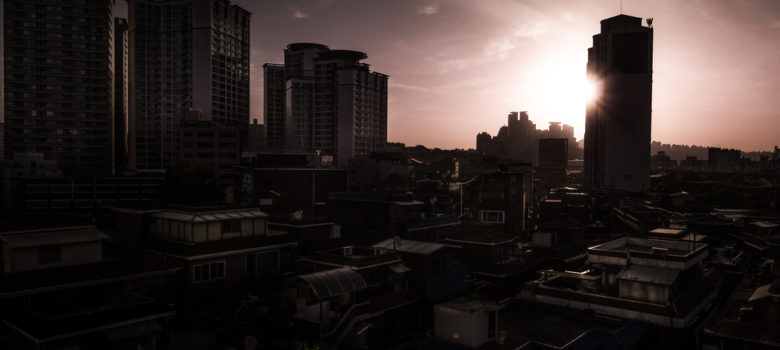
Power cuts and blackouts can be caused by a lot of different things. We’re really not used to them in UK – we like our power reliable and our lights firmly, you know, lit.
We’re writing this a few days after the biggest power outage in a decade, which caused chaos across the UK. The August 2019 blackout is currently under investigation, and we’ve had a lot of enquiries about possible future events.
What are the different types of blackout?
Permanent Fault
Generally, a permanent fault will be caused by a problem with the power line. In cities and more contemporary settings, power lines are often now buried to minimise accidents with them. Here in the UK, with all our old towns and rural locations, where we use a lot of those high pole and power lines, it can be a significant problem. At least we’re not in hurricane country!
Brownouts
A brownout is when there isn’t enough electricity in the system, and it causes power drops, such as dimming or flickering lights. A lot of machinery will simply not work if it doesn’t have enough electricity going to it, but some electrical items (especially older ones) can suffer malfunctions or operate improperly.
Blackouts
A full blackout is the most severe form of power outage, and it’s the kind that a lot of people experienced last week. They generally happen when there’s a problem at the power-station level.
What causes blackouts?
Weather
Lighten, rain, ice, wind, snow, floods and storms can all lead to problems with both energy generation and power lines. Gale force winds might mean that our wind turbines are generating more energy, but it can also cause power lines to fall and powercuts still to occur. The power lines really are the most vulnerable point in the National Grid system.
Extreme weather and natural disasters cause the vast majority of electrical failures, globally. Here in the UK we’re lucky to have relatively mild weather, with very few instances of earthquakes, hurricanes, and other such natural phenomena. Flooding is our biggest natural threat to a consistent power supply.
Wind (And Other Intermittent Sources)
There’s been a lot of discussion about whether our increasing use of wind power in this country was to blame for the blackout last week, and here’s why.
We love wind power, it’s undeniably one of the best weapons we have in our arsenal against fossil fuels and climate change. That said, wind is unreliable, and that causes a lot of problems.
On a calm day, when wind power output is low, our other power stations have to increase energy generation to pick up the slack. The more of our grid we dedicate to wind, the fewer flexible power stations (generally the nasty one like gas and coal) we’re maintaining for low-wind times. This has caused a lot of people to worry about low wind causing power cuts and blackouts.
On the flip side of this, there’s a concern that unusually high winds could cause power surges that would cripple the grid and cause blackouts that way. We have certain (expensive) measures to prevent this from happening, but the higher the proportion of our energy that is generated this way, the more bigger the surge would be. All in all, the intermittency of wind is a big problem, and you can hear us discuss it in detail here.
That said, the National Grid has categorically said that the recent power outage had “nothing to do with changes in wind speed or the variability of wind.”
Maintaining Frequency
According to the National Grid, our recent blackout was down to the “rare and unusual” disconnection of two major power stations at the same time – the Little Barford gas power station in Bedford, and Hornsea wind farm. While technically these two failures only make up a very small percentage of the overall energy flowing around the grid, parts of the system were still shut down completely. This is down to how the infrastructure works.
To put it in layman’s terms, to operate properly the National Grid has to work maintain a 50Hz frequency, and if it varies too much from that then there are big problems. If demand drops but our supply stays high, the frequency rises too high. If demand stays high but there’s a drop in supply (as happened recently, due to the failing power stations), the frequency drops too low. It can cause a lot of damage to the National Grid infrastructure if we let the whole system operate at this lower frequency, which would be extremely costly to repair.
The solution is to cut off parts of the grid to reduce the overall demand and get the frequency back to 50Hz (or very close). It’s an automated failsafe system that kicks in to protect the grid network, so try not to feel too targeted if you were in one of the places affected by the blackouts this August. Effectively you took one for the team, and to prevent a lot bigger energy issues nationwide.
Think we missed something? Do you have a different opinion?
Comment below to get your voice heard…












You missed the point completely. The failure was 100% caused by Hornsea windfarm. Winds in the North Sea were very strong and gusty that evening and were rapidly increasing in strength. The output from Hornsea was increasing sharply and that that triggered the gas plant to start going offline because its input was then unnecessary, just at the point when the wind became too strong for Hornsea to cope with any more, and so it shut down.
—
We have at least 2 power cuts a month here near Derby…. great or just poor?